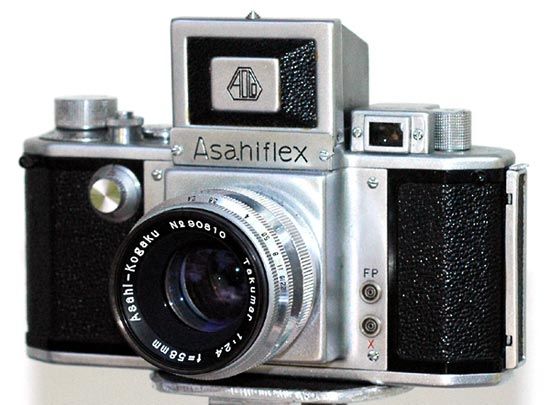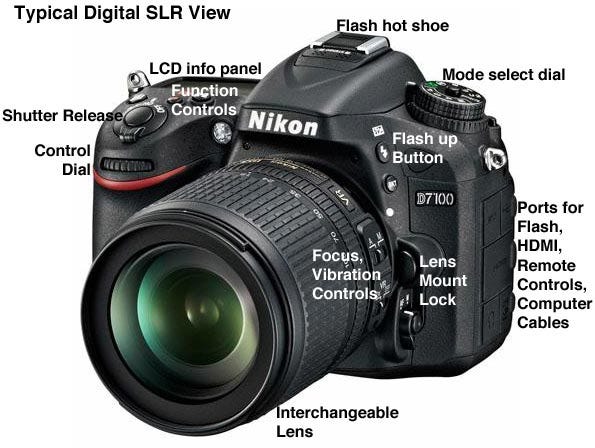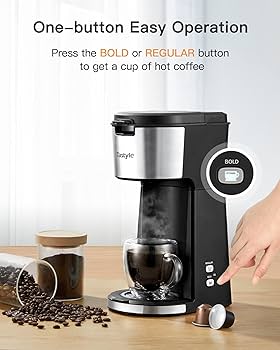Getting to Know Your Gear: What is a Single Lens Reflex Camera?
Introduction
Are you keen on photography? Then getting to know your gear becomes as crucial as knowing how to compose a shot. This blog dives into the intriguing architecture of the Single Lens Reflex (SLR) camera, outlining its mechanics, benefits, and the many forms it takes. We also provide you with tips on how to use an SLR for optimal photo quality.
Starting with discussing 'what is a single lens reflex camera', we guide you through a peek inside its working process, then onto understanding why they are a favorite choice for many photographers. We will also be exploring the different types of SLR cameras, from analog to digital, before painting a clear picture of the best practices when using this versatile piece of equipment.
Defining the Single Lens Reflex Camera: What is It?
The Single Lens Reflex or SLR camera stands distinctively in the realm of photography equipment, owing to its innovative design and utility. But what makes it so special? Let's break it down:
- Unique Design: An SLR camera boasts a single lens and a reflex mirror arrangement. This mirror swings out of the way when a picture is taken.
- Direct Optical View: This setup provides an accurate preview of your frame directly through the lens. In other words, what you see is precisely what you capture.

- Versatility: Loved equally by professionals and hobbyist photographers, the SLR camera is known for its adaptability in diverse shooting conditions.
In a nutshell, an SLR is all about offering photographers a precise preview along with excellent image capturing capabilities through a single lens system. Its utility and performance make it a go-to choice for many, whether they are professionals or amateurs.
How Does a Single Lens Reflex Camera Work? A Peek Inside
Functionality of the Viewfinder and Reflex Mirror
A closer look at an SLR will undoubtedly bring our attention to these key components:
• The Viewfinder: This acts as the 'eye' of the camera. It allows the photographer to look straight through the lens, facilitating a perfect composition of the frame. When you look through the viewfinder, you are looking at the light reflected off the reflex mirror and onto a glass prism or additional mirrors, which then redirects it to the viewfinder.
• The Reflex Mirror: It plays a central role in the operation of SLR cameras. At its default position, the mirror reflects light towards the viewfinder. However, pressing the shutter button causes the mirror to swing upward, thus clearing the path for the light to reach the sensor or film. It returns to its original position after the shot, reestablishing the viewfinder's view.
Details on the Shutter Mechanism and Sensor
The Shutter Mechanism and the Sensor are the two other pivotals of an SLR camera's design. Here's how they contribute to the image capture process:
• The Shutter Mechanism: It is the gateway that regulates the passage of light to the sensor. On triggering, the shutter opens for a specified duration - the shutter speed - to expose the sensor to the incoming light. The length of this exposure determines the brightness or darkness of the resulting photograph.
• The Sensor: Consider the sensor as the camera's canvas, where the image forms. In digital SLRs, or DSLRs, the sensor is digital – it converts light into electronic signals which then form the image. Analog SLRs, on the other hand, use film - the light causes chemical reactions on the film's surface, which is then developed to reveal the image.
Understanding these essential elements can help photographers gain more control over their camera and the images they produce, fully harnessing the potential that SLR cameras offer.
Why Consider an SLR? Unraveling the Advantages
SLR cameras are not just tools for photographing, but they are devices that offer a superior level of control, flexibility, and quality in photography. If you are still on the fence about investing in an SLR, here are some compelling reasons highlighted below:

- Variety of Lenses: An SLR camera lets you interchange a multitude of lenses. That means you can effortlessly switch between macro, wide-angle, telephoto lenses and more, to enhance your scope of creativity.
- Exceptional Image Quality: SLR Cameras have a clear edge over their competitors in terms of delivering high-quality images. Large sensors in these cameras perform admirably in diverse lighting conditions, making them perfect for every situation.
- Accurate Framing: The 'Through the Lens’ view that SLR cameras offer makes sure that what you see through the viewfinder matches the resulting photograph. This accurate rendition makes framing your shots substantially easier and precise.
- Manual Controls: One of the biggest advantages of using an SLR camera is the control it provides. An SLR comes with manual settings for shutter speed, aperture, and ISO, allowing photographers to experiment with different configurations for the perfect shot.
In summary, SLR cameras provide versatility and performance that is highly appealing to photography enthusiasts and professionals alike. If it's creative control, superior quality, and precision you're after, then an SLR is worthy of your consideration.
Not Just Digital: Exploring the Varieties of SLR Cameras
SLR cameras aren't solely bound to the digital domain. Their variety extends quite a bit, each type offering its unique features and uses.
- Digital SLR (DSLR): These are the most familiar kinds today, with a digital sensor, multiple control options, and interchangeable lenses. They combine the mechanics of traditional SLRs with the convenience of digital technology.
- Film SLR: A classic that still holds its charm, the Film SLR captures images on photographic film. It's a favorite among traditionalists who appreciate the tangibility and process inherent in film photography.
- Medium Format SLR: Standing apart from the conventional SLR types, these cameras use larger film or house larger digital sensors. The result? Superior image quality that's unrivaled in sharpness and depth.
- Mirrorless Cameras (SLR-Like): These simulate the SLR experience but minus the reflex mirror system, hence the name. Because of this, they're usually smaller and lighter, yet they offer similar control as a DSLR.
Understanding the kinds of SLR cameras available is essential when deciding the best fit for your photography needs. Each type adds its unique flavor to the spectrum of photography, allowing you to choose based on personal style, budget, and preferences.
Tips for Using Single Lens Reflex Cameras for High-Quality Images
To help you get the most out of your SLR camera, here are some valuable strategies that can significantly improve your photography:
* Master the Basics: Understand and learn to manipulate basic yet crucial camera settings. This includes shutter speed, which influences motion capture and light allowed; aperture, which affects depth of field and light; and ISO settings which balance the image's brightness in varying light conditions.
* Dare to Experiment: Experimenting with different lenses can significantly alter the resulting imagery. Be it wider landscapes, intricate macros, or distant subjects, different lenses offer multiple perspectives.
* Harness the Viewfinder: Try to optimize the use of your camera's viewfinder. Unlike compact digital cameras or smartphone cameras that rely on screens, SLRs allow 'through the lens' framing, providing accurate composition which ensures you get precisely the shot you envision.
* Hands-on Practice: The key to mastering SLR photography lies in experimentation and frequent practice. The more you use your SLR camera, the more you learn to adapt and tweak its controls to suit your shooting style, enhancing your overall photography.
* Manual Mode Advantage: While SLR cameras do offer varying levels of automatic operation, learning to manually control the camera allows for greater control and creativity. Remember, some of the best shots are obtained by breaking the 'standard' photography rules.
* Value Post-Processing: Even with great photography skills, photos can benefit from some amount of post-processing. This helps improve image sharpness, contrast, color balance, and so much more, ultimately resulting in a polished final result.
In sum, an SLR camera is an incredible tool providing an array of creative options for photographers. However, just owning one isn't enough. To truly harness its power, understand its mechanisms, optimize its settings to suit different scenery, and embrace constant experimentation. By doing so, you'll step closer to creating not just photographs, but commanding pieces of art.
Conclusion
SLR cameras, whether digital or film, are a powerful tool for photographers seeking to elevate their craft. By understanding their intricacies and utilizing their features creatively, you can transform your everyday photos into stunning snapshots. Remember, mastering an SLR may require practice, but the creative control and precision it offers makes it worth every shot.
Related FAQs about what is a single lens reflex camera
What differentiates an SLR camera from other types of cameras?
SLR cameras offer a direct optical view through a single lens system. With a reflex mirror, it provides precise preview and remarkable image capture capabilities. Other key differentiators include access to a diverse range of interchangeable lenses, large sensors that enhance image quality, and full manual controls for customized photography experiences.
What factors should I consider when buying an SLR camera?
When purchasing an SLR, consider the type of photography you will do, which will dictate your lens and accessory needs. Look for a model which caters to your comfort and portability needs. Determine if you prefer digital (DSLR) or film-based systems. Ensure your chosen camera fits within your budget, including future lens and accessory purchases.
How do I optimize the use of an SLR camera for better images?
To optimize an SLR for better images, familiarize yourself with its manual settings such as shutter speed, aperture, and ISO. Experiment with different lenses, learn to frame using the viewfinder and practice regularly. Also, don't underestimate the power of post-processing to enhance your images.


